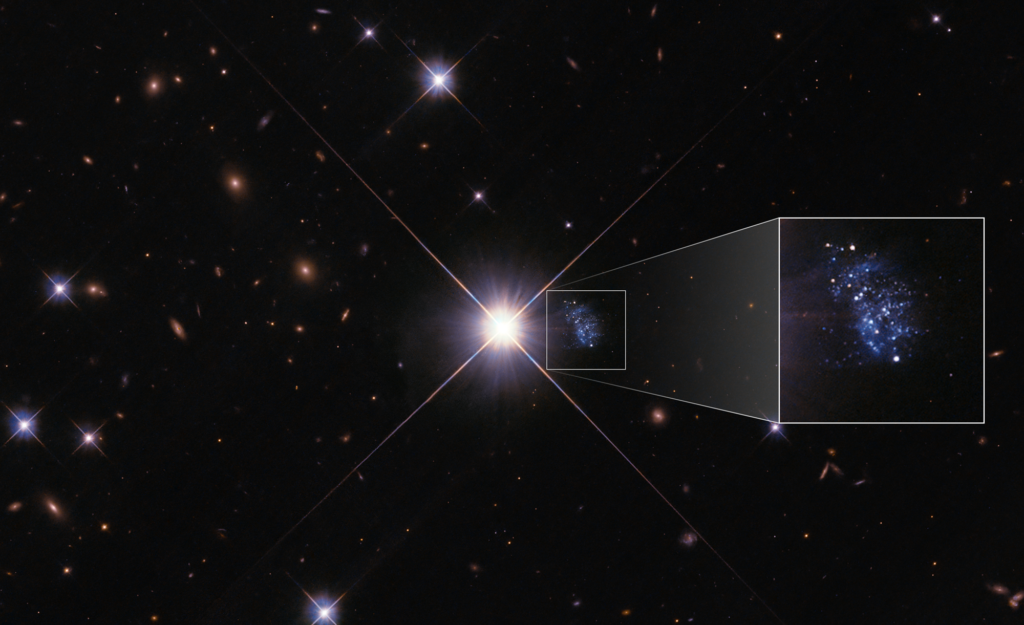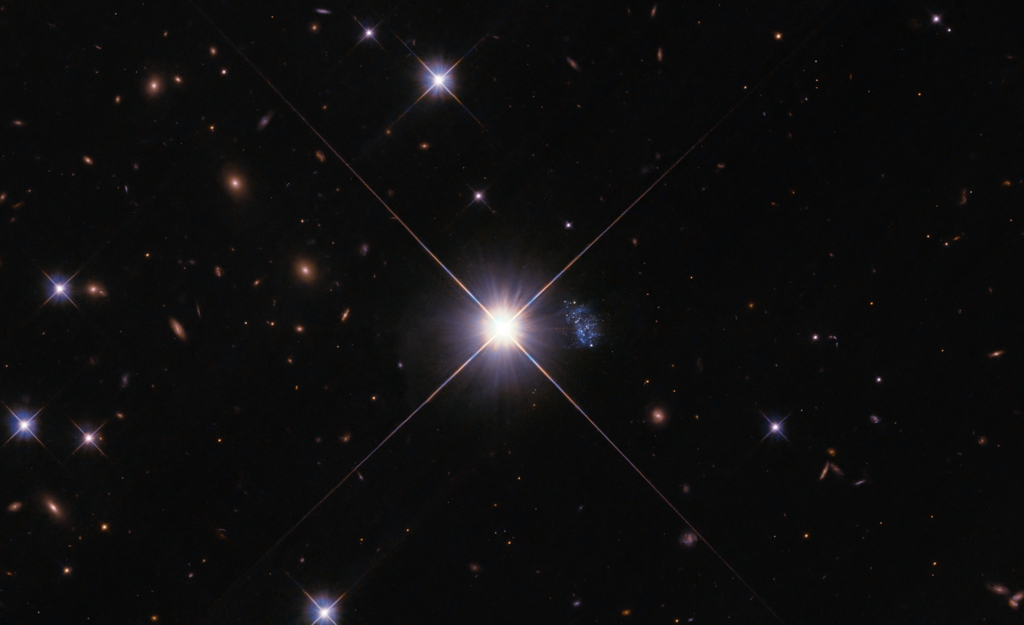Astronomers have reported the discovery of a previously unknown galaxy in the vicinity of the Milky Way. For a long time it “hid” behind the foreground star, which made it impossible to see it.
Space Hide-and-Seek
The newly discovered galaxy was designated HIPASS J1131–31 (J1131–31). It is located at a distance of only 20 million light-years from Earth and, despite its small size (its diameter is only 1200 light-years), should have been found by astronomers long ago. But the fact is that the position of the galaxy in the sky coincided with the position of a closer star of the Milky Way. The starlight completely eclipsed J1131–31, making its observations impossible. It is not surprising that some astronomers decide to use “Peekaboo” as an informal name for the galaxy — by analogy with the game of hide-and-seek.

It was only at the beginning of the XXI century that J1131–31 finally “showed itself” by coming out from behind the star. It was first noticed during observations made on telescopes of the Australian Parkes Radio Observatory. But then the researchers mistook it for a cloud of cold hydrogen. Later, the GALEX radio telescope helped determine that J1131–31 is actually a compact galaxy. And recently, the Hubble telescope was able to conduct detailed studies of this object and took its most detailed photo.
Ideal natural laboratory
The discovery of J1131–31 is remarkable not only for the fact that the galaxy has been hiding from astronomers for so long, but also for its properties. During the observations, Hubble was able to identify about 60 stars J1131–31. Almost all of them have an age not exceeding several billion years. In addition, J1131–31 is extremely poor in elements heavier than hydrogen and helium.

Thus, J1131–31 is very young and at the same time contains few heavy elements. This makes it very similar to the earliest galaxies formed shortly after the Big Bang. In fact, it is a natural laboratory that allows us to understand how the very first “star islands” in the Universe look and evolve.
According to the researchers, Hubble’s observations were just a quick look at J1131–31. In the future, they are going to conduct an in-depth study of the galaxy using the James Webb Space Telescope. Researchers hope to learn more about its stellar population, as well as uncover the mystery of its origin.
According to https://www.nasa.gov
Follow us on Twitter to get the most interesting space news in time
https://twitter.com/ust_magazine

